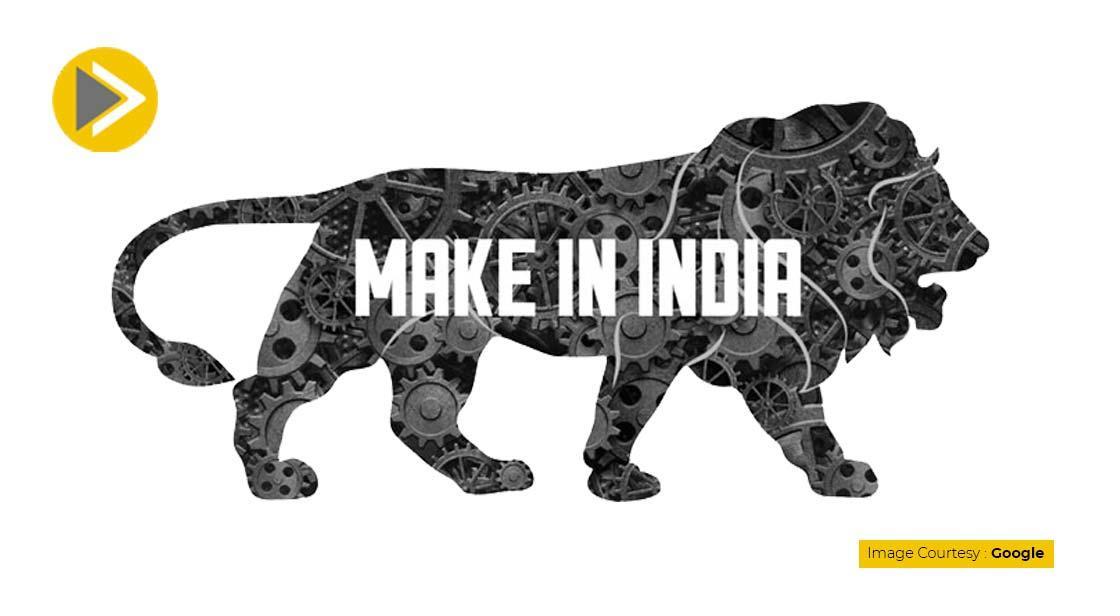‘Make in India’ Push: HMD Announces Direct-to-Mobile Phones for Digital Bharat

News Synopsis
In a significant development for India's digital innovation landscape, HMD Global, in association with FreeStream Technologies (a startup incubated at IIT Kanpur), Tejas Networks, and other collaborators, has announced its plan to introduce Direct-to-Mobile (D2M) phones in India.
The official reveal is scheduled for the World Audio Visual and Entertainment Summit (WAVES) 2025, to be held in Mumbai from May 1 to 4.
What Is D2M Technology?
A Game-Changer in Broadcasting
D2M technology is a groundbreaking innovation in content delivery, capable of transmitting OTT, live TV, video, audio, and messages directly to mobile phones, eliminating the need for internet or Wi-Fi.
This advancement is in line with Prime Minister Narendra Modi’s vision of a 'Viksit Bharat' and reinforces the goals of the ‘Make in India’ initiative.
Devices Powered by Indian Innovation
SL-3000 Chipset and Local Manufacturing
The deployment will feature affordable feature phones, smartphones, and tablets built with support from Tejas Networks and integrated with the SL-3000 chipset developed by Saankhya Labs, which forms the core of the Direct-to-Mobile (D2M) technology framework.
This technology has been extensively tested in live network environments through a joint effort involving Prasar Bharati, IIT Kanpur, and Tejas Networks over the past few years.
Key Leaders Share Their Vision
Ravi Kunwar, VP and CEO of HMD India and APAC, said, “This pioneering platform will allow consumers to access a vast range of multimedia content directly on their devices.”
Sumeet Nindrajog, Director of FreeStream Technologies, emphasized, “This technology is set to revolutionize how content and data are consumed by users.”
He also added that their partnership with HMD is expected to “lay the foundation for a robust device ecosystem,” crucial to India’s nationwide D2M rollout.
Parag Naik, co-founder of Saankhya Labs and EVP at Tejas Networks, stated, “The technology would allow the delivery of targeted ads, educational content, emergency alerts, and more, aligning with the government’s vision for a digitally empowered India.”
Chris Ripley, President and CEO of Sinclair, Inc., also expressed his support, noting, “We’re proud to be at the forefront of global deployment and look forward to collaborating with partners like HMD in making India a hub for next-generation broadcast technology.”
Strengthening India’s Tech Ecosystem
This initiative is expected to significantly boost local manufacturing, support job creation, and position India as a key hub for next-gen broadcast solutions. By reducing reliance on mobile internet, D2M can help bridge the digital divide, especially in rural and underserved areas.
About ‘Make in India’ initiative
The 'Make in India' initiative is a flagship program launched by the Government of India on September 25, 2014, under the leadership of Prime Minister Narendra Modi. Its primary objective is to transform India into a global design and manufacturing hub, thereby boosting the domestic manufacturing sector, attracting foreign investment, fostering innovation, enhancing skill development, and protecting intellectual property.
Key Objectives of 'Make in India':
-
Increase the growth rate of the manufacturing sector: The initial aim was to achieve a growth rate of 12-14% per annum in the manufacturing sector.
-
Create employment: The initiative targeted the creation of 100 million additional manufacturing jobs by 2022 (this target year has since been revised).
-
Increase manufacturing's contribution to GDP: The goal was to increase the share of the manufacturing sector in India's Gross Domestic Product (GDP) to 25% by 2022 (revised to 25% by 2025).
-
Attract foreign investment: The program actively seeks to encourage both domestic and foreign companies to establish manufacturing units within India.
-
Promote 'Vocal for Local': This aims to transform India into a global design and manufacturing hub, emphasizing the production and consumption of domestically made goods.
-
Improve the ease of doing business: A core focus is on simplifying regulations, reducing bureaucratic hurdles, and creating a more business-friendly environment.
-
Develop world-class infrastructure: This includes the development of industrial corridors, smart cities, and the modernization of existing infrastructure.
-
Promote innovation and R&D: The initiative aims to support research and development activities and build a robust ecosystem for innovation.
Pillars of 'Make in India':
The 'Make in India' initiative is built upon four key pillars:
-
New Processes: Focuses on 'ease of doing business' through deregulation and simplification of the industrial licensing process.
-
New Infrastructure: Aims to develop modern and efficient infrastructure, including industrial corridors and smart cities.
-
New Sectors: Identifies and promotes key sectors for investment and growth, initially focusing on 25 sectors, which has been expanded under 'Make in India 2.0' to include 27 sectors.These span manufacturing, infrastructure, and service activities.
-
New Mindset: Shifts the government's role from regulator to facilitator, partnering with industry for economic development.
Impact and Achievements (as of late April 2025):
While the initial targets for GDP contribution and job creation have faced challenges and revisions, the 'Make in India' initiative has had a significant impact in several areas:
-
Increased Foreign Direct Investment (FDI): India has attracted substantial FDI inflows since the launch of the initiative. Between 2014 and 2024, India attracted a record $667.41 billion in FDI.
-
Improved Ease of Doing Business: India's ranking in the World Bank's Ease of Doing Business Index saw a significant improvement, moving from 142nd in 2014 to 63rd in 2020 before the index's discontinuation. This reflects policy reforms and simplified processes.
-
Growth in Manufacturing: Several sectors have witnessed significant growth. India has become the second-largest mobile phone manufacturer globally. The electronics sector's production doubled from $48 billion in 2017 to $101 billion in 2023, with a large percentage of mobile phones sold in India now being locally manufactured.
-
Defense Manufacturing: There's a growing focus on self-reliance in defense, with indigenous development and manufacturing of major defense platforms.
-
Export Growth: India's exports reached $778 billion in 2023-24, with sectors like electronics, pharmaceuticals, and automotive contributing significantly.
-
Job Creation: While the target of 100 million jobs hasn't been fully met, sectors like textiles and electronics have seen significant job creation.
-
Policy Reforms: Initiatives like the Goods and Services Tax (GST), the Insolvency and Bankruptcy Code, and the reduction of compliance burdens have improved the business environment.
-
Production Linked Incentive (PLI) Schemes: Launched to enhance domestic manufacturing and boost exports, these schemes cover 14 key sectors with a significant outlay, attracting investments and generating employment. By 2024, the PLI scheme had attracted ₹1.23 lakh crore in investments and created over 8 lakh jobs.
-
Infrastructure Development: Projects like the PM GatiShakti National Master Plan aim to build better transportation and logistics infrastructure to support industrial growth.
Challenges:
Despite the progress, the 'Make in India' initiative has faced challenges, including:
-
Not fully achieving the targeted increase in manufacturing's GDP contribution.The manufacturing sector's contribution was around 15.9% in 2023-24.
-
Addressing skill gaps in the workforce.
-
Further improving the ease of doing business, particularly at the state level.
-
Enhancing research and development investment.
-
Strengthening local supply chains.
Way Forward:
The government is focusing on:
-
Streamlining regulations further.
-
Continued investment in infrastructure.
-
Targeted skill development programs.
-
Incentivizing R&D.
-
Promoting local supply chains.
-
Enhancing trade relations to attract more investment and technology transfer.26
In conclusion, the 'Make in India' initiative represents a significant long-term commitment to transforming India's economic structure and enhancing its global manufacturing competitiveness. While some initial targets remain a work in progress, the program has demonstrably boosted investment, improved the business environment, and driven growth in key manufacturing sectors, positioning India as an increasingly important player in the global supply chain.
You May Like









